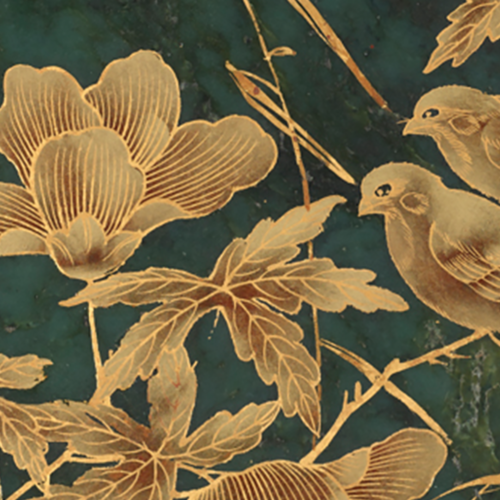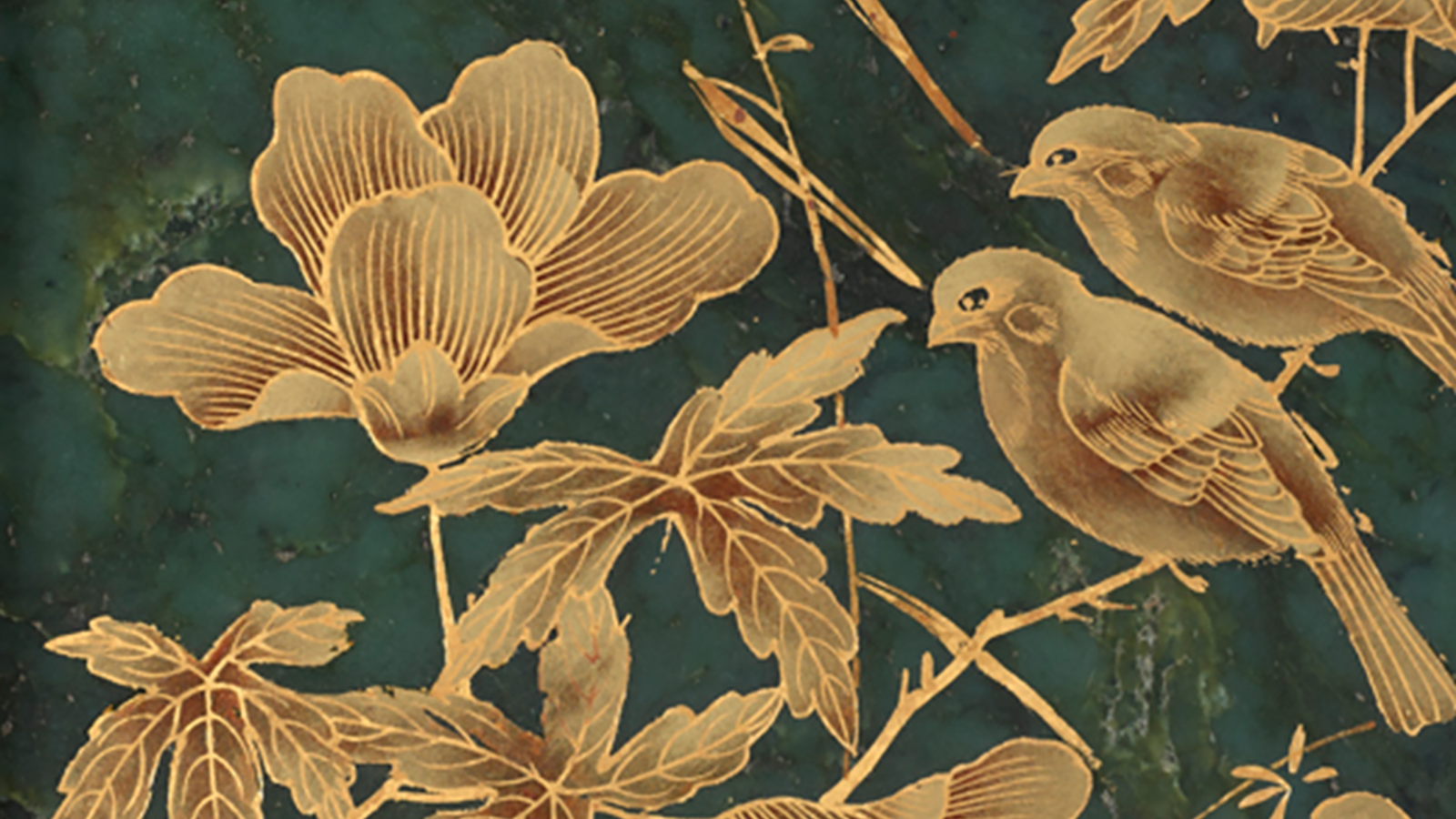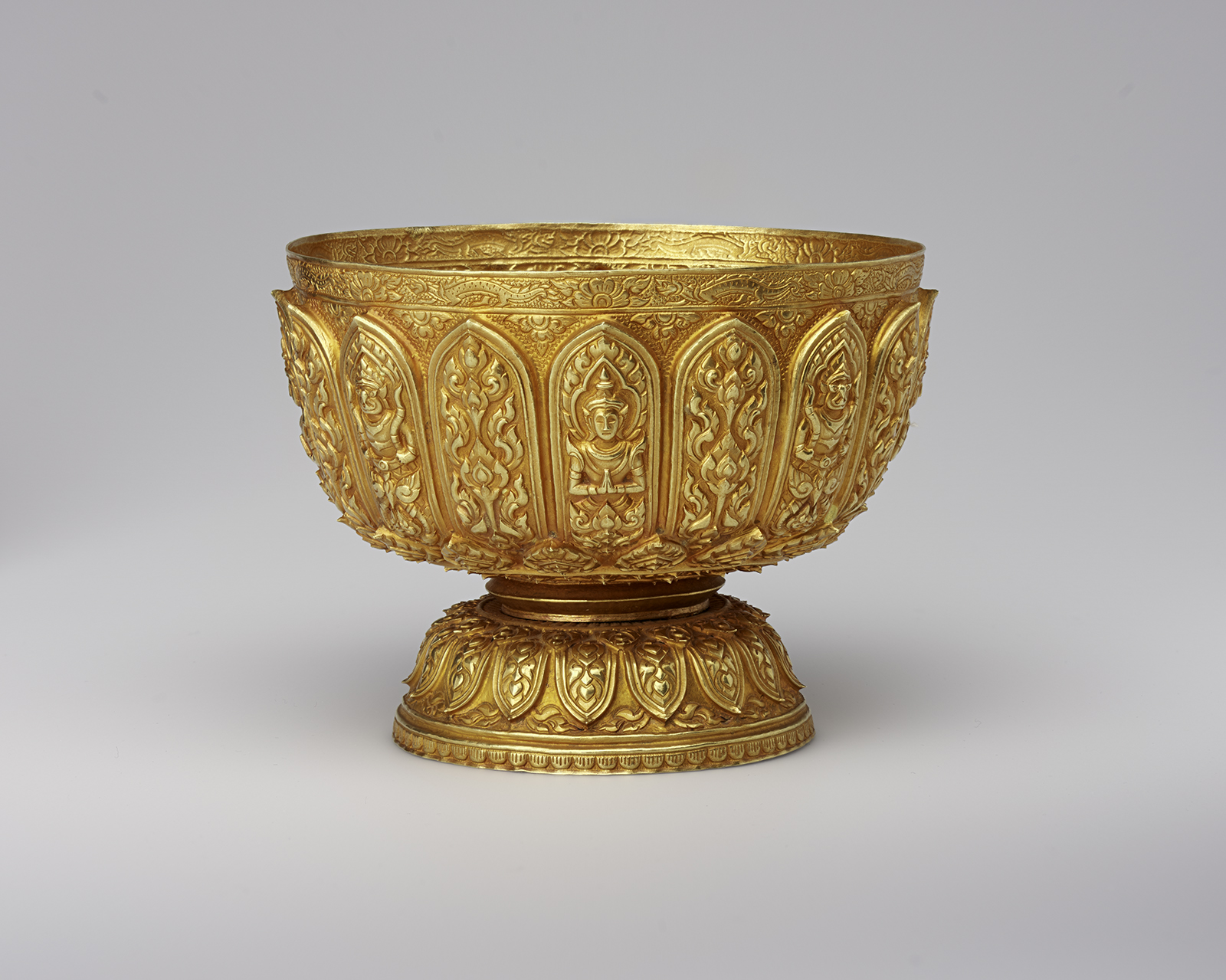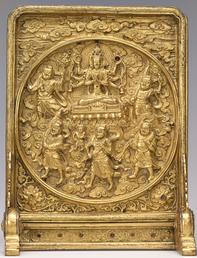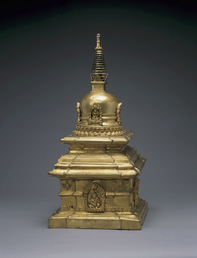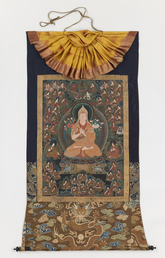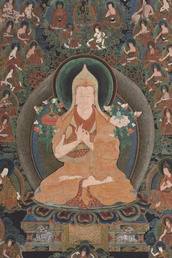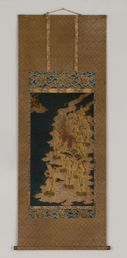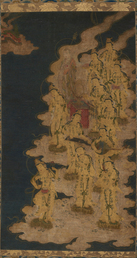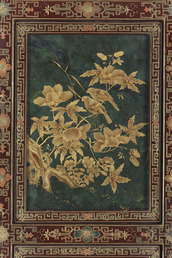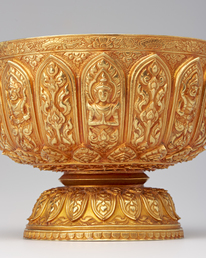Table screen depicting the Taoist deity Doumu and her entourage, approx. 1500–1700. China. Gilded bronze. Asian Art Museum, Gift of Frances Campbell and the Society for Asian Art, 1991.83. Photograph © Asian Art Museum.
Svayambhu Stupa, 1700–1800. Nepal. Gilded copper. Asian Art Museum, The Avery Brundage Collection, B60B212. Photograph © Asian Art Museum.
The lama Buton Rinchen Drup, approx. 1650–1700, by Kyenrab Jamyang (Tibetan). Colors on cotton. Asian Art Museum, The Avery Brundage Collection, B60D38. Photograph © Asian Art Museum.
The lama Buton Rinchen Drup (detail), approx. 1650–1700, by Kyenrab Jamyang (Tibetan). Colors on cotton. Asian Art Museum, The Avery Brundage Collection, B60D38. Photograph © Asian Art Museum.
Bodhisattvas descending from paradise, approx. 1300. Japan. Ink, colors, and gold on silk. Asian Art Museum, The Avery Brundage Collection, B60D34+. Photograph © Asian Art Museum.
Bodhisattvas descending from paradise (detail), approx. 1300. Japan. Ink, colors, and gold on silk. Asian Art Museum, The Avery Brundage Collection, B60D34+. Photograph © Asian Art Museum.
Birds, flowers, and landscapes, approx. 1920–1930. China. Jade, gold, and wood. Asian Art Museum, The Avery Brundage Collection, B60J978. Photograph © Asian Art Museum.
Gold bowl with mythical figures, 1920–1921. Thailand. Gold. Asian Art Museum, Gift of the family of Helen King Gethman, 2008.91. Photograph © Asian Art Museum.

